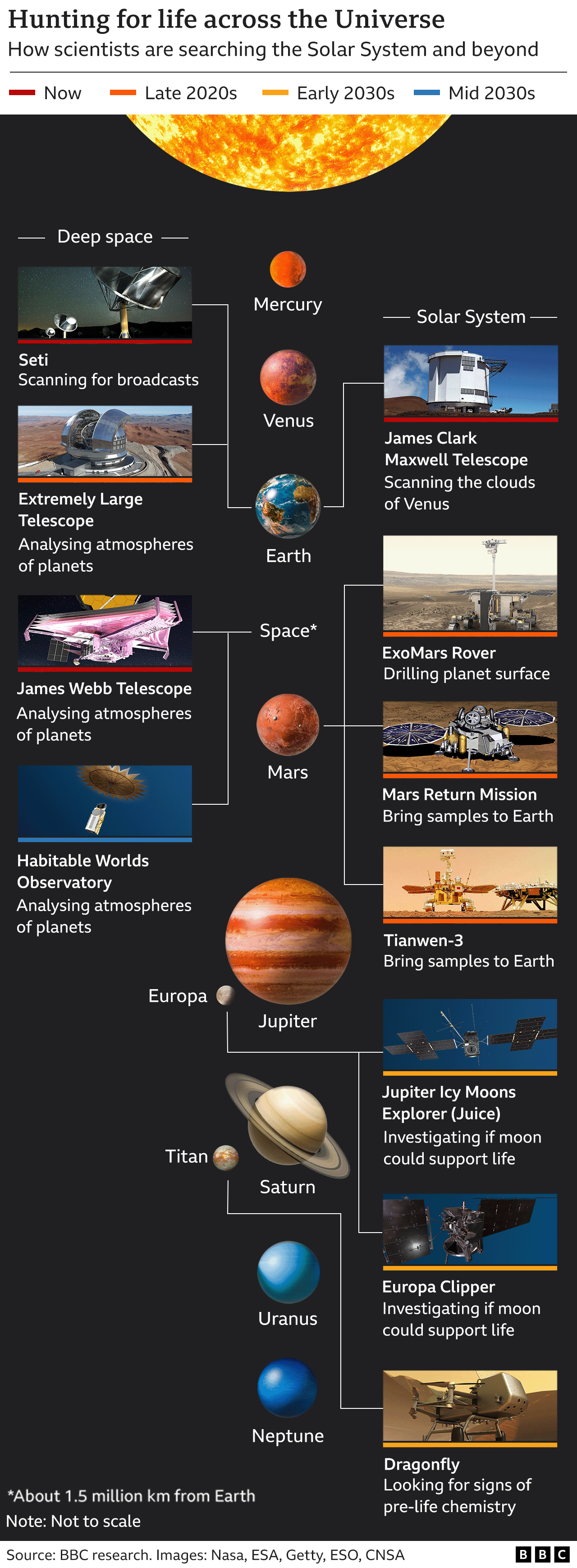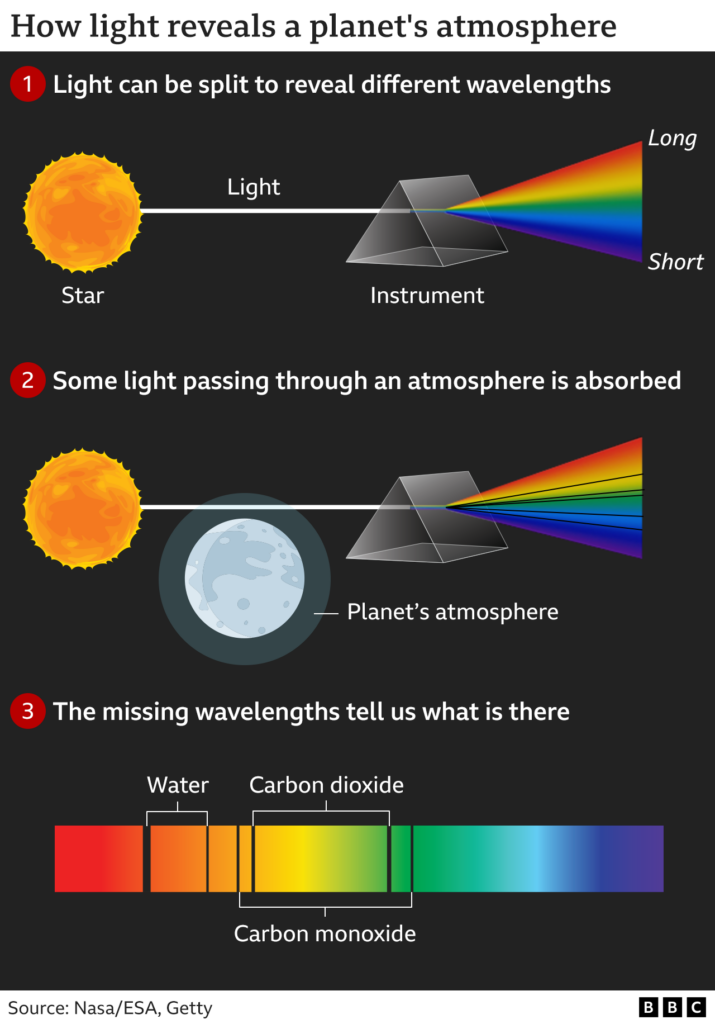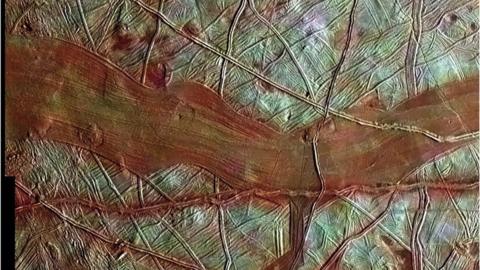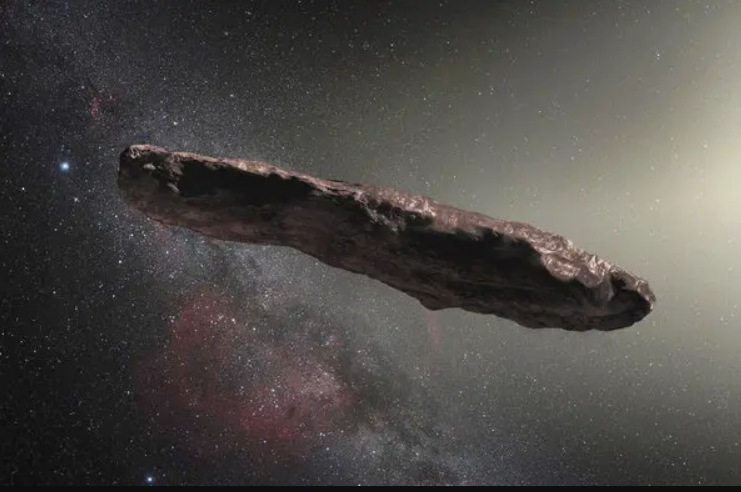Scientists believe that it is only a question of time before we discover extraterrestrial life.
Therefore, it can be said that more and more technical experts have shifted from making inquiries about the existence of alien life in the cosmos to waiting to hear about the discovery of this life form. It has become the popular belief that we could be potentially able to get serious signals from a farther away planet probably even in our lifetimes, that is in a few years.
The mission to Jupiter directed by a leading scientist has been welcoming even the possibility that some of the planet’s icy moons would show “surprising” lack of life forms.
NASA’s James Webb Space Telescope (JWST) has already marked presence across a variety of extrasolar world when the hints of life on a planet outside our solar system triggered its unprecedented threat or opportunities.
At present, the new space race that is developing in the world sets forth the necessity for all people to reach the most important scientific breakthrough to date among which many of the missions are already in progress or scheduled to be launched soon.
“Prof Catherine Heymans, Scotland’s Astronomer Royal, further explained that “we live in an infinite Universe, full of many stars and planets, and that it has been proven beyond modesty that we must not be the sole intelligent life form. We are now equipped with the technology that allows us to look into this question of whether we are really alone in all the cosmos”.
The ‘Goldilocks zone’
The development of extrasolar planet atmospheric research enables telescopes to find not only those elements but also other products of life biological processes.
Nowadays, there has been an important improvement in this process. The atmosphere of K2-18b planet, situated 120 light-years away, could potentially be the first context where another gaseous compound that is a signature of biological processes from our planet could be found.
Many of the scientists call the distance of this planet from its Sun “the Goldilocks zone”. This unique location may be the reason why it has the perfect temperature that is not too hot nor too cold for life to sustain itself on the planet’s surface. Water is possible due to the presence of liquid water and it is the most basic component that is vital for the survival of life.

The team is sure that in twelve months they will be for sure that the puzzling arguments will prove to be truth or there are no signs of them. Prof. Nikku Madhusudhan from the UK’s Institute of Astronomy under the Cambridges University, said these plausible hints would change the direction of search for alien life beyond our solar system. If the life forms are discovered on the first planet that they explore, it could indicate that it will be very easy to locate life outside our planet all around the space.
Within the next five years, through this exploration, there will be a noticeable shift in our knowledge and understanding of life in the universe. Their hunger for existing not just 10 more Goldilocks planets but beyond, for sure, driving their team to keep looking for those life signs that they keep searching for. Even the very fact of there being no evidence on K2-18b would still contribute immensely to the knowledge on the existence possibility of life on the planets of the similar kind. This journey to discover life beyond Earth is only a part of many ongoing or planned efforts, where some of them aim at our solar system whereas the others are ready to defy the limits of space.

Whilst being one of the most powerful technologically speaking, the JWST does have its restrictions as well. It suffers from the drawback that is either too distant or close to the Sun and therefore too small as Earth or different as the K2-18b which is eight times bigger is.
To mitigate this problem, NASA is organizing in the next ten years a startup of the Habitable Worlds Observatory (HWO) in 2030. An advanced star shield that will sieve out the unnecessary light from the stars where planets are located is used by this observatory. The consequence would be to enable it to identify and collect samples from the planets that are similar to our home planet.
Besides this, the Hubble Wide-Field- Camera-3 (Hubble Wide- Field- Camera-3) project is expected to be launched by the European Southern Observatory (ESO) later in the decade. On the low ground and looking at the beautiful skies of the Chilean dry lands, the ELT will be constructed with the mirror that is today the largest one that has ever been built with a diameter of 39 meters. This helps it to get more exquisite pictures of atmosphere of the planets unlike the previous crafts.
This includes the use of JWST, HWO and ELT, which rely on a time-tested techniques used by chemists for longest time. Through this technique, they can detect and characterize a galaxy’s chemical content by using the light of emitted materials. This is very unique ability as they can even study the tiniest speck of light that goes on 100s of light years away portraying the vast power and the utility of science.

Searching close to home
Some authors focus on the study of distant planets, but others go about learning about the planets in our own solar system.
Jupter’s moon Europa is considered by most scientists as a habitable moon where life might have started. It has its own surface patterns which resemble tiger-like stripes and is found only on another planet, making it quite an interesting world too. Although its exterior is covered with ice, it conceals an ocean of ice and water vapor jets, which are rising up to the surface of space.
Between NASA’s Clipper and ESA’s Juice rendezvous missions, which are slated for the early 2030s, Europa is to be virtually “explored” in depth.

The lead scientist of the European mission, Prof. Michelle Dougherty, allowed this by covering the possibility of finding life after the Juice mission was approved in 2012. Galileo himself mentioned that he would be surprised if there were no life on any of Jupiter’s icy moons.
The first destination is planned to be Titan, a moon of Saturn. NASA is going to send spacecraft Dragonfly to this location. Titan presents us with an uncommon world that has lakes containing liquid methane and ethane clouds, which leads to striking orange color of the skies. These molecules, along with water, are thought to be the essencial ones for life to exist.
Although Mars is now very inhospitable, astrobiologists maintain that it could once have been an earth-like, habitable planet with water oceans and a thick atmosphere.
The current mission of the NASA Perseverance rover includes the searching for samples from an old crater which was once supposed to be an ancient river delta. During this mission, the samples would be brought back to Earth in the 2030s to be analyzed for possible microfossils of newly discovered but extinct simple life forms.
Could aliens be trying to contact us?
The investigation of radio signals from beyond our worlds for a long has been pushed by many, particularly by the site for Search for Extra Terrestrial Intelligence (Seti). Some incher scientists believe it is part of science fiction of a science of science fiction that has the slightest prospect.
Considering the magnitude of space made the research work though somewhat chaotic. Notwithstanding, Seti has narrowed down its search after using space telescopes, among them JWST, that can identify locales that might potentially harbour alien civilizations.
According to Nathalie Cabrol, director of the Carl Sagan Center for the Study of Life in the Universe, the arrival of the multilingual voices at the institute have kindled new life into the organization. The improved telescope could be used and along with the state-of-the-art equipment which is capable of detecting powerful laser beams from other planets, Seti is now going great strides.
However, many scientists are still skeptical about Seti’s mandate for looking for such signal, and Dr. Cabrol responds by saying that it’s very likely that we very close to a discovery such as chemical traces in distant atmospheres, space data from moons flybys, and even microfossils from Mars are very possible.
Although, the search for a signal may sound like an idealistic approach to look for the existence of extra-terrestrial life, it is the simplest and most viable technique that could work and give us a result at any time.
She pictures a situation in which a symbol that provides a key to the code is picked up. This is analogous to a “Aha” moment. In the last three decades, the existence of exoplanets as a phenomenon was not obvious. But now, with about 5,000 confirmed discoveries, the astrobiologists and astronomers have much more chances for accumulating new data.
Dr. Sarker and his Cardiff University team with K2-18b as an object of interest are also greatly interested in revealing evidence that can completely change our perspective of life and the sense of the cosmos.
Do not forget to share your opinion with us to provide you with the best posts !




0 Comments